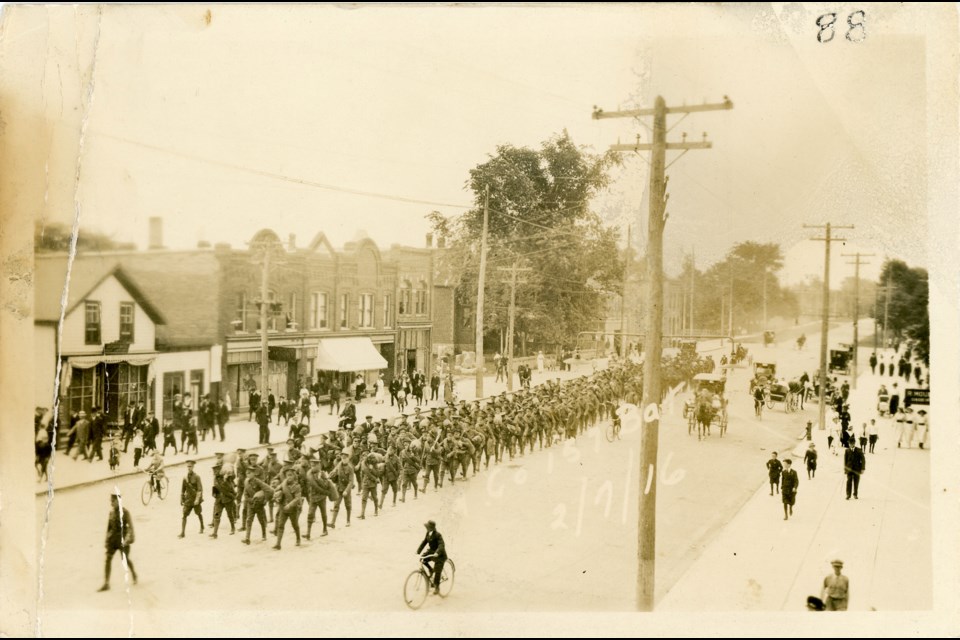In this week’s featured postcard, local soldiers comprising “A Company” of the 157th Battalion march north along Hurontario Street, between Ontario Street and Fourth Street East, on July 2, 1916.
While the soldiers were most certainly the photographer’s focus, many interesting details about a less photographed section of the main street have been preserved.
The wooden frame building on the left side of the photograph was home to Ditson Bakery. By 1916, a two-storey brick bakery had been constructed by the Ditson brothers, Louis and Ernest, within the same block. This new bakery is home to Mad Dogs Coffee and Vinyl Café at 239 Hurontario Street.
The next three storefronts comprise “Finlay Block”, identifiable by the semi-circular and triangular gables that continue to adorn the buildings today. The triangular gable at the centre reads FINLAY BLOCK, 1908 – the year of construction. The Vernon’s City of Collingwood Directory for the years 1912-1913 lists J.H. Finlay as being in the business of agricultural implements. By 1923, J.H. Finlay had partnered with G. Herbert Finlay under the name Finlay and Finlay to provide auctioneer, real estate and piano services.
In the photograph, a sign for the City Steam Laundry Company is just visible to the left of the awning.
The business in the fourth, and final, storefront is unknown and the building does not appear to be in existence today. Instead, a more recent build, estimated to have been completed in the 1970s, is home to Tracy’s Nails at 205 Hurontario Street.
The location of the now vacant building at 219 and 221 Hurontario Street is just visible to the left of the large trees. Most recently, this building was home to The Old Town Terrace. Interestingly, the stone rubble wall that continues to run parallel to Hurontario Street today is present in the postcard photograph. Upon further research, the stone wall, built of local rubble, is noted as a “rare piece of traditional, stone masonry in a brick town” by Architect and Planner Philip H. Carter in the Collingwood Downtown Heritage Conservation District Inventory of Buildings. In fact, its existence may predate the Great Fire of 1881.
If you have any information about the storefronts featured in this week’s postcard, please contact Collingwood Museum staff.
Remember This is a weekly series of historic photographs submitted by the Collingwood Museum to CollingwoodToday.ca. These photographs were originally collected and documented by the Huron Institute in an historical catalogue entitled Huron Institute Paper and Records: Volume III. Much of Collingwood’s early history has been preserved due to the dedication and foresight of the early museum’s founders, namely its secretary-curator David Williams, upon its establishment in 1904.
